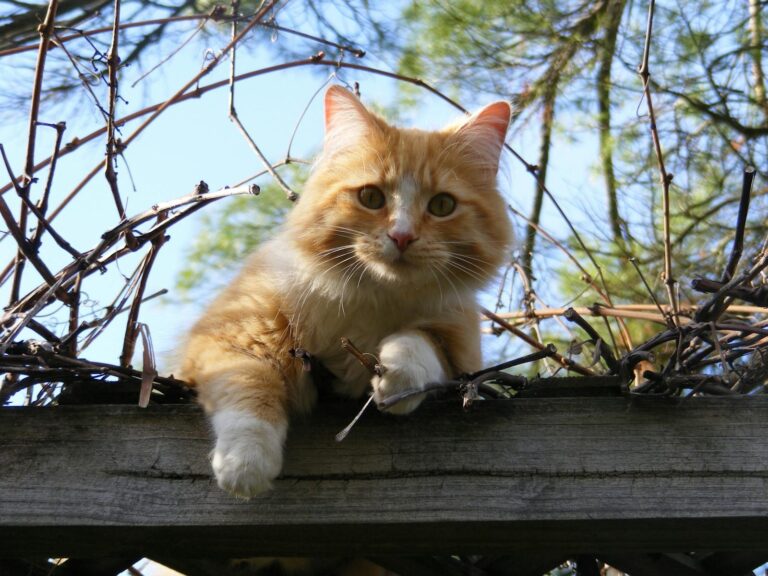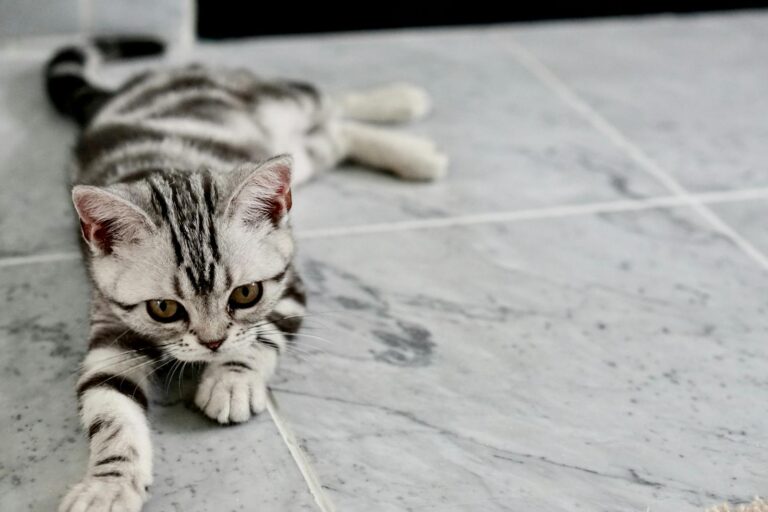10 Common Mistakes New Cat Owners Make
Becoming a cat owner is an exciting and fulfilling experience, but it can also come with its fair share of challenges. In this article, we will explore the 10 common mistakes new cat owners make and how to avoid them, ensuring that your journey with your furry friend is a joyous one.
Introduction: Welcoming Your New Feline Friend – Setting the Stage for a Successful Partnership
Cats are often seen as independent creatures, but they still require love, attention, and proper care just like any other pet. Many new cat owners might assume that providing food and shelter is enough to keep their feline companions happy and healthy. However, there are numerous factors to consider in establishing a successful partnership with your cat. Understanding their needs, behaviors, and health requirements will not only enhance your relationship but will also contribute to the well-being of your new pet.
In this section, we will delve into some common misconceptions and errors made by those who are new to cat ownership. By shedding light on these pitfalls, we can pave the way for a harmonious coexistence between you and your whiskered companion.
Nutrition Neglect: Avoiding Common Feeding Errors That Can Impact Your Cat’s Health
Nutrition is the cornerstone of your cat’s health. Many new owners fail to appreciate the significance of a balanced diet tailored to their cat’s specific needs. This oversight can lead to serious health issues down the line.
Understanding Cat Diets
It’s essential to recognize that cats are obligate carnivores. This means that a significant part of their diet must consist of animal-based proteins. Unlike dogs, cats cannot thrive on a vegetarian or predominantly grain-based diet. The nutritional requirements of a cat vary by age, weight, health condition, and activity level.
To ensure that your cat receives the right nutrients, consult your veterinarian regarding high-quality cat food brands that meet AAFCO (Association of American Feed Control Officials) standards. Consider looking for options that list meat as the first ingredient and avoid foods that contain excessive fillers or artificial additives.
Overfeeding and Obesity
One critical mistake many new cat owners make is overfeeding their pets. It’s easy to fall into the trap of giving treats or extra portions out of love, but this can lead to obesity—a pervasive issue among house cats. Obesity can cause various health problems, including diabetes, joint issues, and reduced lifespan.
To combat this, measure your cat’s food according to the recommendations on the packaging and be mindful of portion control. Using interactive feeding toys can also help to prevent boredom while providing mental stimulation during mealtime.
Fresh Water Accessibility
While focusing on what goes into your cat’s diet, don’t forget about hydration. Cats have a low thirst drive and may not drink enough water, especially if they eat primarily dry food. Ensure that your cat has constant access to fresh, clean water.
Consider investing in a cat water fountain, as many cats prefer running water, which encourages them to drink more. Maintaining proper hydration is vital for urinary tract health and overall well-being.
Litter Box Oversights: Ensuring Proper Hygiene and Eliminating Behavioral Issues
Another common pitfall for new cat owners is neglecting the importance of a proper litter box setup. Cats can be quite particular about their bathroom habits, and any oversight in this area can lead to undesirable behaviors.
Choosing the Right Litter
When it comes to selecting litter, there are various types available, such as clumping, non-clumping, silica gel, and natural biodegradable options. Understanding your cat’s preferences is crucial, as they may reject certain types of litter.
Conduct a little experiment by trying different kinds to see what your cat responds to best. Be aware that most cats appreciate unscented litter, as strong fragrances can deter them from using the box.
Litter Box Placement
The location of the litter box plays a significant role in whether your cat feels comfortable using it. Ideally, place the litter box in a quiet, low-traffic area where your cat can feel secure. Avoid placing it near their food and water bowls, as cats prefer their bathroom area to be separate.
Furthermore, if you have multiple cats, the rule of thumb is to have one box per cat plus one extra. This helps to reduce territorial disputes and ensures that everyone has access when needed.
Cleaning and Maintenance
Regular cleaning and maintenance of the litter box are vital for hygiene. A dirty litter box can lead to behavioral issues, such as inappropriate urination or defecation outside the box. Scoop the box daily, and thoroughly clean it with soap and hot water once a week.
If you notice your cat avoiding the litter box, it could indicate discomfort or dissatisfaction with the cleanliness. Addressing this issue promptly is crucial for maintaining good litter box habits.
Ignoring Enrichment: Providing Adequate Mental and Physical Stimulation for a Happy Cat
Cats need both physical and mental stimulation to remain healthy and happy. New cat owners often underestimate the importance of enrichment, leading to boredom and potential behavioral problems.
Interactive Playtime
Regular interactive play sessions are essential for keeping your cat engaged and physically active. Investing in a variety of toys, such as wand toys, laser pointers, or feather toys, can provide entertainment and exercise.
Schedule dedicated playtime with your cat every day, adjusting the duration and intensity based on their energy levels and preferences. Not only does this help strengthen your bond, but it also allows your cat to express their natural hunting instincts.
Environmental Enrichment
Creating an enriched environment is another important aspect of a cat’s mental well-being. Cats are curious creatures that enjoy exploring their surroundings. Consider adding vertical spaces such as shelves, cat trees, and tunnels to encourage climbing and exploration.
Additionally, rotate your cat’s toys regularly to keep their interest piqued. Introducing puzzle feeders can also offer an engaging challenge while rewarding them with treats.
Social Interaction
While cats are known for being solitary animals, social interaction is still vital for their emotional health. Spend quality time with your cat each day, whether it’s cuddling, grooming, or simply talking to them.
If you have a single cat, consider introducing another feline friend, but do so carefully. Gradual introductions are key to preventing territorial aggression.
Skimping on Veterinary Care: Prioritizing Preventative Health and Addressing Early Warning Signs
Many new cat owners mistakenly overlook the importance of regular veterinary checkups. Keeping up with preventative care is essential in ensuring your cat lives a long and healthy life.
Routine Wellness Visits
Scheduling routine wellness exams with your veterinarian is crucial for monitoring your cat’s overall health. These visits typically include vaccinations, parasite prevention, dental checkups, and early detection of potential health issues.
Cats are experts at hiding signs of illness, so it’s vital to stay proactive rather than reactive. Regular vet visits can help catch any concerns early, making treatment more manageable.
Vaccinations and Preventive Medications
Ensure that your cat receives all necessary vaccinations based on your veterinarian’s recommendations. Core vaccines protect against common diseases such as rabies and feline distemper.
Additionally, don’t forget about parasite prevention. Fleas, ticks, and worms can pose serious health risks to your cat. Work with your veterinarian to establish a preventive care plan tailored to your cat’s lifestyle and environment.
Recognizing Warning Signs
Being observant and attuned to your cat’s behavior is essential for identifying any changes that may signal health problems. If you notice alterations in appetite, energy levels, or litter box habits, don’t hesitate to consult your veterinarian for guidance.
By staying vigilant and proactive in your cat’s healthcare, you can help ensure a longer, healthier life for your beloved pet.
Lack of Understanding of Feline Behavior: Deciphering Cat Communication and Building a Stronger Bond
Understanding feline behavior is key to nurturing a healthy relationship with your cat. New cat owners often misinterpret or overlook their pet’s signals, leading to frustration or misunderstanding.
Body Language Insights
Cats communicate through a range of body language cues. Familiarize yourself with common signals, such as tail position, ear orientation, and facial expressions. For instance, a relaxed cat will have a neutral body posture, whereas an arched back and flattened ears can indicate fear or aggression.
Observing your cat’s body language can help you respond appropriately to their moods and needs, fostering better communication between you and your feline friend.
Vocalizations
Cats use vocalizations to convey different emotions and desires. While some cats are naturally more talkative than others, pay attention to the context of their sounds. A soft purr may indicate contentment, while a loud yowl might signal distress.
By learning to interpret your cat’s vocalizations, you can better understand their feelings and respond to them effectively.
Social Needs and Boundaries
Every cat has individual social needs and preferences. Some may welcome affection and closeness, while others prefer solitude. Respecting your cat’s boundaries is crucial for building trust and comfort.
Encourage a positive relationship by allowing your cat to initiate interactions and offering affection when they seek it. Over time, understanding your cat’s unique personality will strengthen your bond.
Conclusion
Navigating the world of cat ownership can be a rewarding yet challenging experience. By recognizing and addressing the 10 common mistakes new cat owners make, you can create a nurturing environment that promotes your cat’s health and happiness. Prioritize proper nutrition, maintain a clean litter box, provide enrichment, ensure regular veterinary care, and strive to understand your cat’s unique behaviors. With patience and dedication, you’ll foster a fulfilling relationship with your feline friend that lasts a lifetime.







